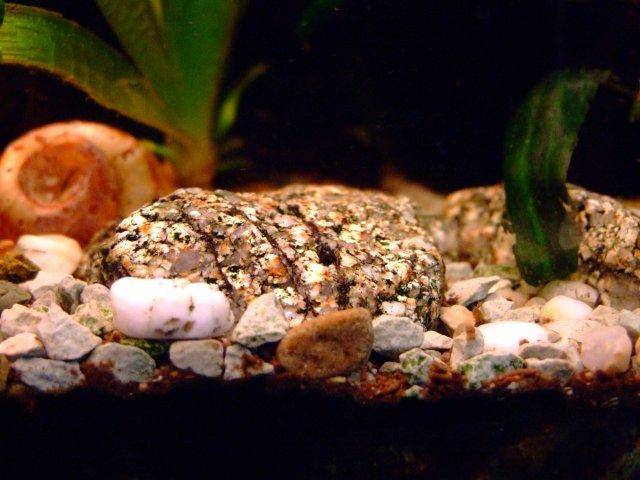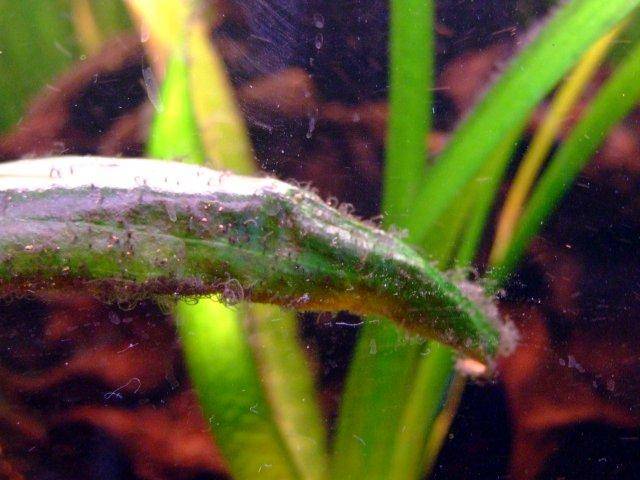Understanding Algae Types and Choosing the Best Algae Eaters for Your Aquarium
Algae eaters - click to find out more




Quick links - Answers
Brief Description
This article explores why algae grows in fish tanks and provides information on algae-eating fish: simply click here to learn more. We also address common questions and offer a detailed FAQ section below. Additionally, we'd love to hear about your experiences with algae eaters or any algae-related challenges; please leave a comment using the form at the bottom of this page! For more related information, check out these helpful pages: Black Brush Algae, Staghorn Algae, Blue-Green Algae, Chinese Algae Eater Profile, Siamese Algae Eater Profile, and Controlling Algae in Fish Ponds.
Introduction
Seeing green spots or hair algae in your freshwater tropical aquarium can be frustrating. Despite your efforts to manually remove or trim affected plants, algae often seems to keep coming back. At this point, many aquarium owners consider introducing algae-eating fish into their tanks. Fish stores often capitalize on this, convincing customers that a few fish can quickly resolve their algae issues. In reality, it’s common for enthusiasts to end up buying several fish without fully understanding their needs or habits. To effectively manage algae, it’s crucial to understand its causes, factors that contribute to its growth, and strategies to control it.
Factors Contributing to Algae Growth
- Insufficient or excessive lighting,
- Improper feeding that leads to decomposing food,
- Poor filtration and aeration,
- Excessive sunlight,
- Frequent temperature fluctuations,
- Dead fish or decaying plants in the tank.
Preventing Algae Growth
- Maintaining stable water conditions,
- Ensuring good filtration and aeration,
- Keeping a consistent temperature,
- Introducing algae-eating fish,
- Performing regular water changes (when necessary),
- Adding live plants (planted tanks generally experience less algae),
- Using snails that eat algae. Their impact is more noticeable when there are many snails in the tank. Ramshorn snails are particularly effective in this role.
While algae is not always detrimental - since it performs photosynthesis and helps break down harmful substances like ammonia and nitrites - its overgrowth can lead to problems. Excess algae can cover plants and tank surfaces, disrupting the aquarium’s balance. Alongside the measures mentioned above, adding algae-eating fish can be an effective way to manage algae growth in your tank.
Effective Algae-Eating Fish
- Ancistrus species
- Otocinclus affinis
- Hypostomus punctatus
- Crossocheilus siamensis
- Gyrinocheilus aymonieri
While tools for removing algae from aquariums can be helpful, they often fall short compared to algae-eating fish. These tools depend on their design, tank size, and usage, making them less effective in certain situations, such as heavily planted tanks or areas behind rocks. Algae eaters, on the other hand, can access hard-to-reach places and are a more versatile solution. For example, Ancistrus species and other algae eaters are particularly effective at consuming and controlling algae growth.
Algae can be categorized into different types based on their color, size, and the conditions under which they thrive.
Green Dot Algae
Green dot algae is a common type of algae that appears on glass, rocks, plants, driftwood, and other decorations. It thrives in tanks with high lighting. Typically, green dot algae grows in small patches, ranging from 0.1 mm to 2-3 mm (0.04-0.12 inch) in size. It is usually not necessary to use algae eaters to manage this type of algae, as it does not usually overrun the tank. Removing it can be challenging, especially from glass, so using a brush or other cleaning tools may be required.
Hair Algae
Hair algae often develops in tanks with high ammonia levels and on cut plant leaves, particularly affecting species like Vallisneria. Regular trimming of affected plants and removing the algae manually can help control its growth. While Ancistrus species are sometimes recommended, they are generally more effective at smaller sizes (up to 1 cm or 0.39 inch) and may not be as efficient as adults in removing hair algae. Common plecos (Hypostomus punctatus) can be effective, but their feeding habits may change as they mature.
Brown Algae
Brown algae is commonly found in new aquariums due to unstable water conditions. It thrives under low lighting conditions but usually diminishes over time. While common algae eaters can help, they may prefer pellets, wafers, or frozen foods over brown algae. It is important to note that a few algae eaters may not resolve the issue quickly, and persistent problems may require additional measures.
Brown algae can often cover Java moss, causing it to turn brown. New aquarium owners might mistake this for a dead plant, but regular water changes can help manage this issue.
Blue-Green Algae
Blue-green algae, also known as cyanobacteria, can be harmful to both fish and plants. These bacteria thrive in warm, shallow, stagnant, or slow-moving freshwater and are photosynthetic, meaning they need light to grow. They can appear in various colors, from blue-green to olive-green to red.
To combat blue-green algae, enhance aeration and filtration in your tank. This type of algae is typically easier to manage with proper tank maintenance.
Red/Brush Algae
Red or brush algae prefers high pH and hard water conditions. The Siamese algae eater (Crossocheilus siamensis) is known to consume this type of algae effectively.
Green Dot Algae

Hair Algae

Hair Algae

Additional Tips
It is best to avoid using chemicals for algae removal, as they can cause significant harm to both fish and plants. Instead, rely on algae-eating fish to manage algae growth. If you must use chemicals, make sure to wait at least one week before reintroducing fish into the treated tank. During this waiting period, use a strong filter and ensure proper aeration to help restore the tank's balance.
Useful Links
For further reading, check out these resources: thetropicaltank.co.uk/algae.htm, fishpondinfo.com/sae.htm
Questions and Answers
As part of our integration with related articles, we have included the following Q&A section from March 24th, 2011:
-
What do algae eaters eat?
Answer: Algae eaters primarily consume algae, but their diets can vary depending on whether they are omnivores, carnivores, or herbivores. In addition to algae, many algae eaters, such as Bristlenose Catfish, also enjoy bloodworms and vegetable-based foods. Chinese Algae Eaters and other similar species may have similar dietary preferences.
-
Which fish are compatible with algae eaters?
Answer: Algae eaters generally coexist well with peaceful tank mates. Consider adding species that are non-aggressive and unlikely to disturb them, such as dwarf cichlids and tetras.
-
What is the best algae eater for a small tank?
Answer: For tanks of at least 30 liters (~8 US gallons, 6.60 Imperial gallons), the Bristlenose Catfish is a suitable choice. They thrive in tanks larger than 30 liters. For smaller tanks or if space is a concern, consider Apple Snails instead. Remember, Bristlenose Catfish and other algae eaters still require regular fish food to stay healthy.
